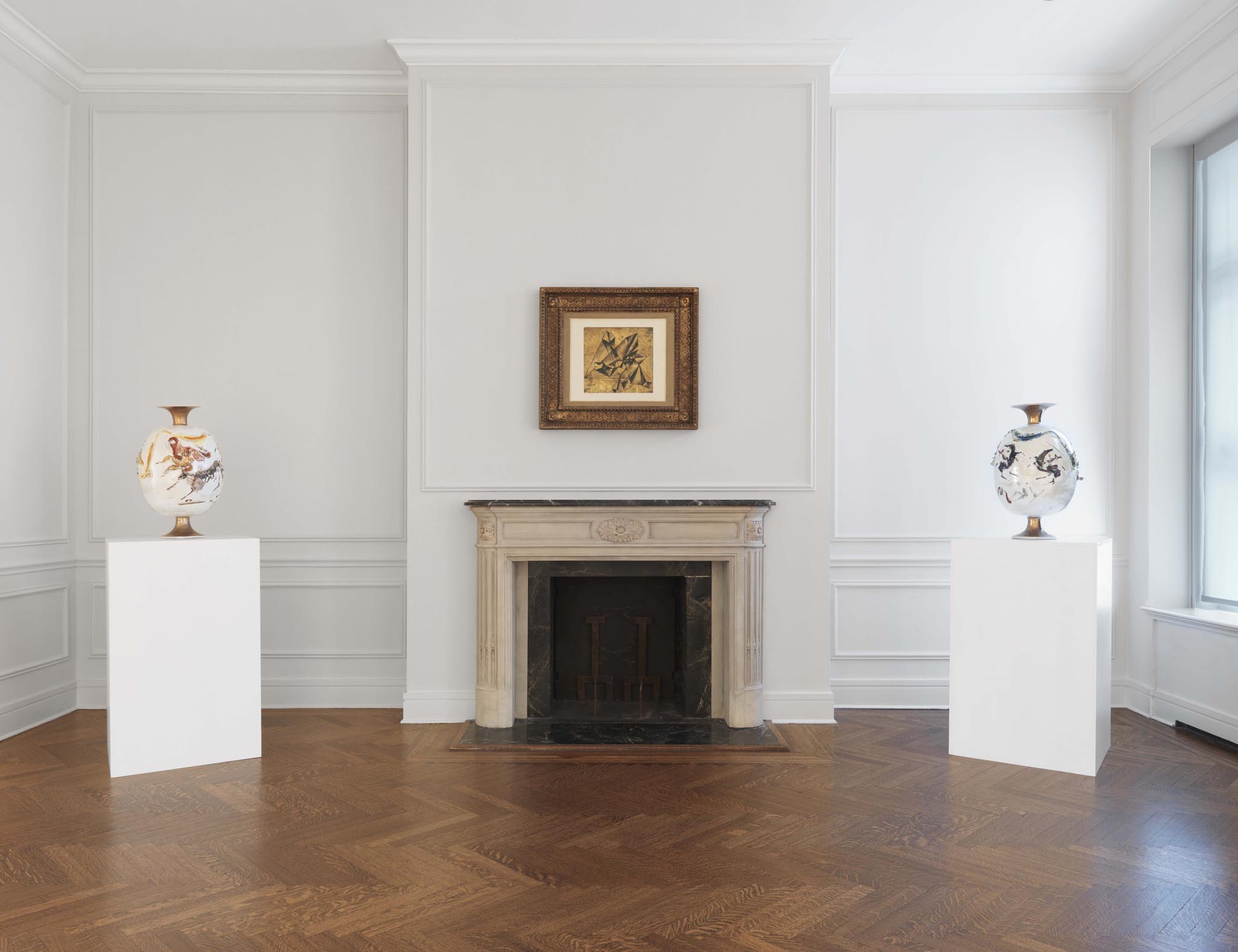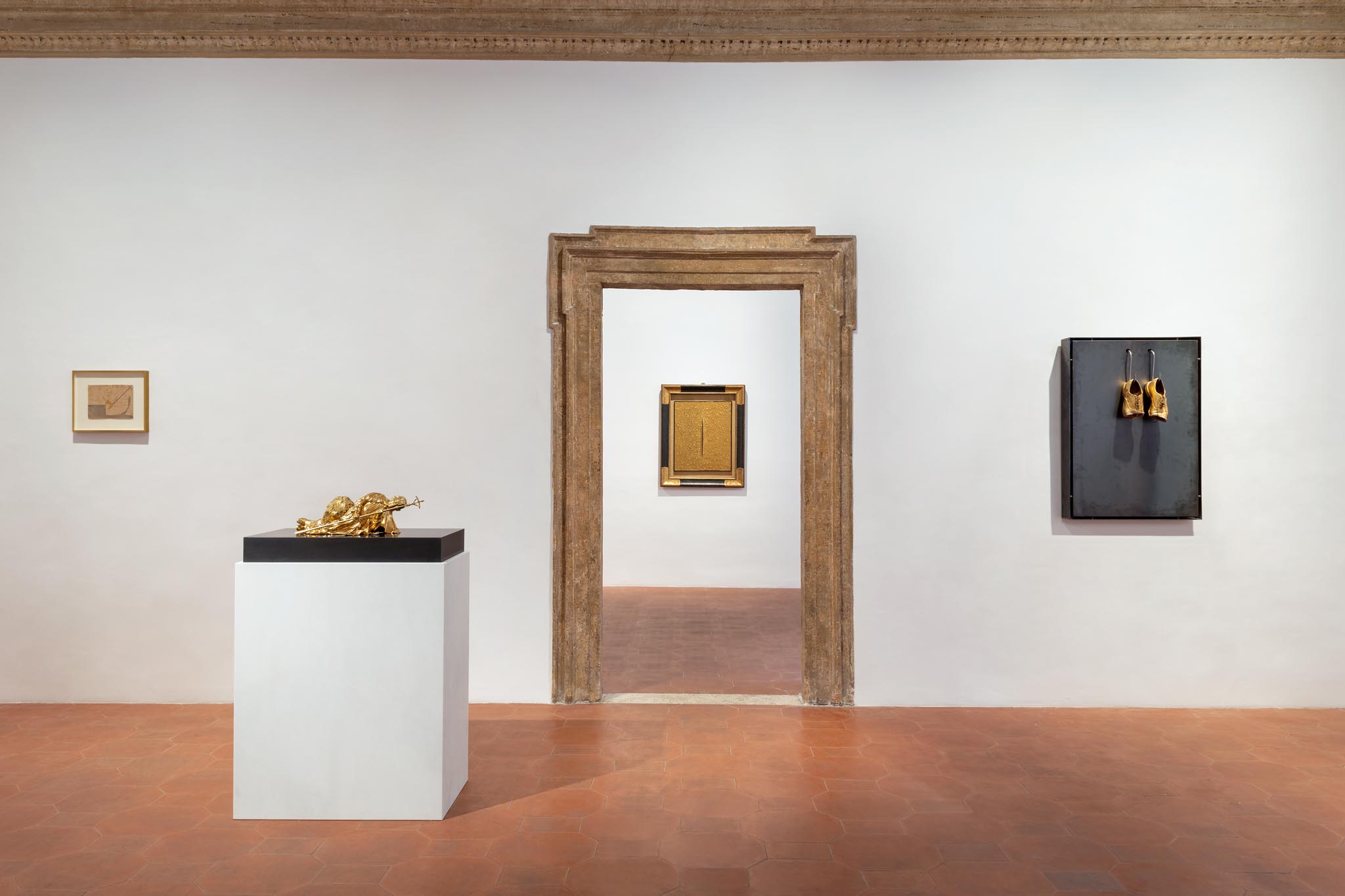Alighiero Fabrizio Boetti (Turin, 1940 – Rome, 1994) was born to Corrado Boetti, a lawyer, and Adalgisa Marchisio, a violinist. After abandoning his Business Administration studies in 1955, he began exploring art as a self-taught artist. He was influenced by the rich cultural life of Turin, American Abstract Expressionism, Lucio Fontana’s Spatialism, and the work of artists such as Henri Michaux and Giacomo Balla.
After marrying the art critic Annemarie Sauzeau, Boetti moved to Paris between 1963 and 1964, where he began his practice in earnest. During this time, he was deeply inspired by the works of Nicolas de Staël, Jean Dubuffet, and André Malraux. In January 1967, Boetti held his first solo exhibition at the Christian Stein Gallery in his hometown of Turin. The show featured a selection of works centered around everyday objects, such as Lampada annuale (1966). His focus on materials as significant elements — and their ability to generate meaning — led critic Germano Celant to include Boetti in the Arte Povera movement, as outlined in his 1967 manifesto, published in Flash Art magazine.
Boetti actively participated in the Piedmontese Arte Povera group, contributing to key exhibitions such as Arte Povera – IM Spazio at La Bertesca gallery in Genoa (1967), and Arte Povera + Azioni Povere at the Ancient Arsenals of the Republic of Amalfi (1968). However, Boetti maintained an independent approach, which eventually led him to pursue a path outside the boundaries of the movement.
In 1969, he took part in the influential exhibition When Attitudes Become Form, curated by Harald Szeemann and held in Bern, London, and Krefeld. In 1974, he opened his first solo exhibition organized by a public institution, at the Kunstmuseum in Lucerne.
During this period, Boetti began exploring themes of identity, notably the concept of duality expressed through the signature Alighiero e Boetti — presenting himself as two distinct yet interconnected personas. Between 1969 and 1970, he debuted his postal art project, Viaggi postali, which explored the temporal and spatial life of an artwork, challenging traditional ideas of authorship.
In the early 1970s, Boetti and his wife focused on mapping and cataloging rivers around the world, laying the foundation for his solo exhibition at Franz Paludetto’s gallery in Turin in 1983.
From 1971 to 1979, Boetti made frequent trips to Afghanistan, particularly to Kabul, where he co-managed the One Hotel with Gholam Dastaghir. The hotel became an additional creative vehicle for his art, and his practice underwent a profound transformation. This shift gave rise to his iconic textile works, especially the Mappe and Ricami, created by Afghan embroiderers who emerged as co-authors. Authorship became a shared process, intertwined with collaborative craftsmanship of a repetitive nature.
In 1972, Boetti and his family moved to Rome, where he established his studio in Piazza Sant’Apollonia, in the Trastevere district. Here, he developed his series of biro-pen works, using dense pen-filled backgrounds as visual fields for encrypted messages. That same year, he exhibited at Documenta 5 in Kassel and at the 10th Quadriennale Nazionale d’Arte in Rome.
The embroidered works from the early 1970s also saw the beginning of Boetti’s exploration of linguistic structures. Through pieces like Ordine e disordine (1973), Segno e disegno (1977), and Dare tempo al tempo (1977), he broke language down into elemental units, arranging them in grids that challenged conventional syntax and meaning.
In 1978, the Kunsthalle Basel held a Boetti retrospective curated by Jean-Christophe Ammann, featuring notable works such as Aerei (1977). Despite the Soviet invasion of Afghanistan, Boetti continued the production of his Mappe and Ricami there, expanding his practice to include works on paper, conceptual language experiments, and autobiographical reflections.
In 1983, he began working with Afghan refugee artisans who had moved to Peshawar, Pakistan, and produced the celebrated Tutto series. These densely packed tapestries featured everyday objects and symbols, reflecting Boetti’s distinctive blend of chaos and order.
In February 1993, Boetti’s last solo exhibition in Italy was held at the Christian Stein Gallery — the same venue that had hosted his debut solo show. He passed away in Rome on April 24, 1994.

